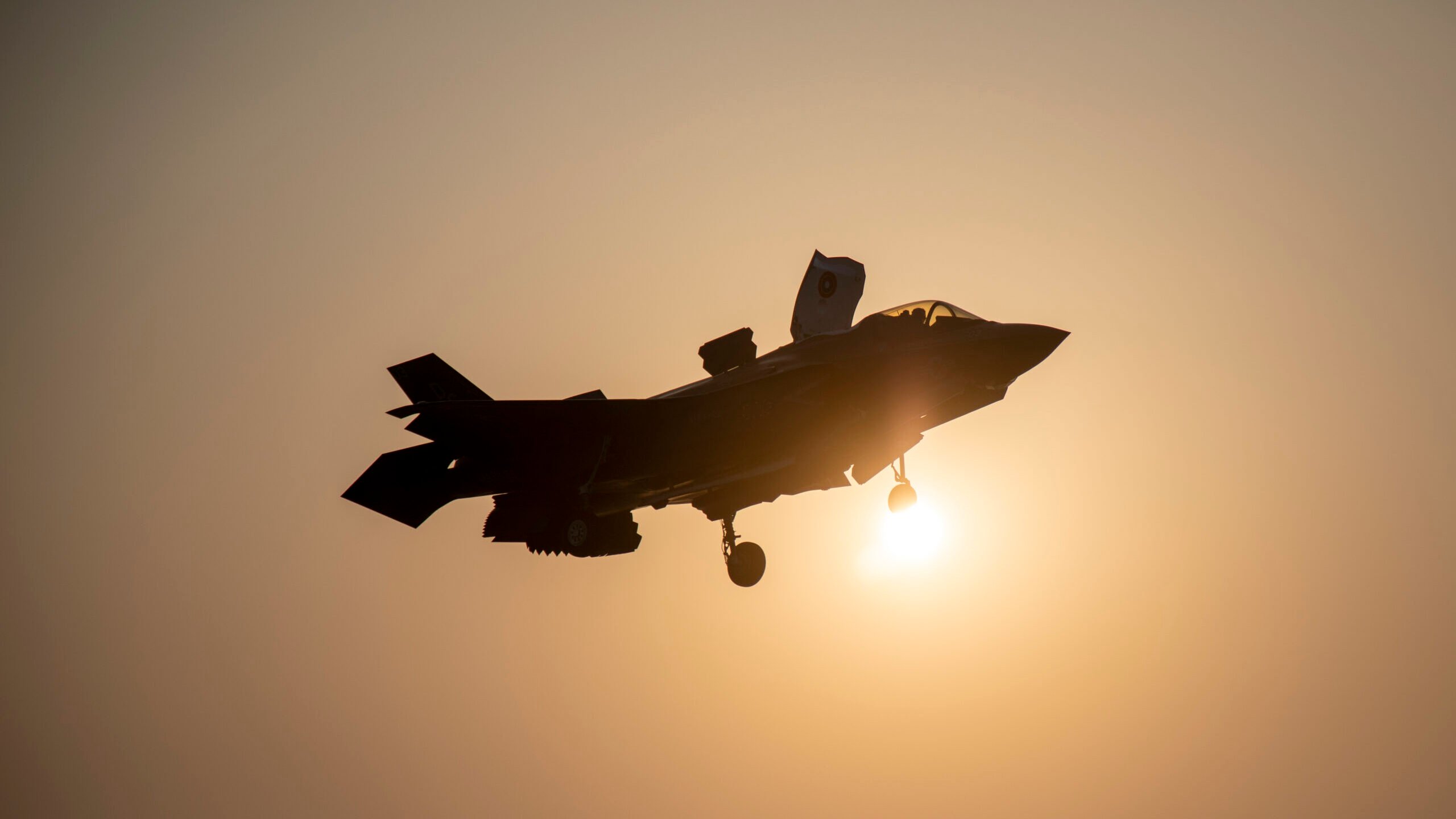
A U.S. Marine Corps F-35B Lighting II pilot prepares to land on the amphibious assault ship USS Makin Island (LHD 8), March 31, 2023. (U.S. Marine Corps photo by Cpl. Carl Matthew Ruppert)
WASHINGTON — Lockheed Martin now expects to deliver at most 120 F-35s this year, a dip of a couple dozen planes caused by delays related to new Tech Refresh 3 (TR-3) upgrades.
“Our current view is we expect to deliver 100 to 120 F-35 aircraft in 2023,” Chief Executive Officer Jim Taiclet said during Lockheed’s second quarter earnings call today, lowering previous projections that the aerospace giant could deliver anywhere between 147 and 153 of the stealth fighters this calendar year.
During the company’s first quarter earnings call in April, executives warned that delivery targets would take a hit due to TR-3 delays, though it was unclear at the time how many planes may be effected. As was first reported by Breaking Defense, newly-built F-35s with the upgraded TR-3 configuration will not be accepted by the Pentagon until ongoing testing for the system completes. That could lead to a backlog of over 80 jets, according to a recent report in Defense One.
Lockheed is also now staring down an approximate payment delay of $400 million due to the TR-3 issues, Bloomberg News reported Monday. The Pentagon expects TR-3’s issues to be worked out sometime between December of this year and April 2024, though Taiclet today stood by the company’s projection that the first TR-3-equipped jet could get out the door before the end of the year.
Greg Ulmer, the head of Lockheed’s aeronautics division, said in a previous interview with Breaking Defense that those deliveries — with some 50-odd TR-3 equipped jets in flow this year — could be performed rapidly as the jets await software approval before they’re handed over to the government.
TR-3 provides a range of new features for the fighter, such as increased processing power, which in turn enables a suite of upgrades known as Block 4. Officials previously planned to have TR-3 ready by April 2023, but complications, including what the Government Accountability Office [PDF] described as “software stability issues,” have placed current plans roughly a year behind schedule.
Lockheed is still delivering jets in the TR-2 configuration, and 50 of those were accepted by the Pentagon in the first half of the year, Taiclet said, noting that overall production is not slowing down as a result of the TR-3 delays. The company still expects to hit its goal of 156 annual deliveries beginning in 2025, he added, and can do so with increased capacity following the expansion of fuselage production offered by a new partnership Rheinmetall.
Lockheed Chief Financial Officer Jay Malave said if demand persists, along with approval for more exports, “there might be a business case for the government and industry to go beyond 156. The Rheinmetall center fuselage expansion will definitely be constructive to that.” Malave prefaced his comments by cautioning that “there are a lot of other elements that would have to be essentially funded between our suppliers, ourselves and the US government to build the rate in the entire supply chain above the 156-level that we’ve all agreed on so far with the government.”
Following the dust-up in Paris where officials from F-35 engine maker Pratt & Whitney excoriated Ulmer’s support of a new engine for the fighter in an interview with Breaking Defense, Taiclet appeared to backtrack, saying that the company has no position on how the Pentagon should modernize the jet’s engine.
Though Lockheed is the F-35 prime contractor, the engine is acquired separately as government-furnished equipment, Taiclet said, meaning Lockheed has no role in deciding its fate. “So we’re not involved in that decision-making process. And therefore, Lockheed Martin does not have a formal company position on engine selection or modernization.” Taiclet said.
“We implement the US government decision. And that’s what we’re doing now, so that is very clearly our role and responsibility. And anything outside of that is not an official company position,” he said.
Air Force awards SNC $13B contract for new ‘Doomsday’ plane
The win is a major victory for the firm in a competition that saw the surprise elimination of aerospace giant Boeing.


























